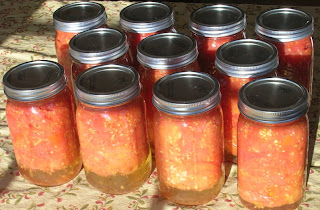I am now paying close attention to the bed in which I planted the garlic and Florence onion seed. Every morning, there is evidence of small critters burrowing just beneath the surface. I was careful to look for the animal's descending holes. There are more there than I originally thought. I'm not sure how many critters there might be, but I presume, given the distribution of evidence throughout the bed, that there must be several.
The photo below shows the size of the holes that go down into the bed. (That's a quarter next to the hole.) They are not large. I don't know what the animals might be living off of. I have had two garlic sprout. (The ones from the fridge.) That is all and those have been left alone.

If the onions will sprout and grow, I won't have a problem. My suspicion is that the critters are going to disrupt the bed enough, even if they don't consume the seeds, that sprouting will become a challenge. I planted a second bed with the Yellow of Parma seed. There has been no evidence of critters in that bed, so I may have something to compare productivity with.
I am getting myself prepared for a war. Right now I wish I had a pet black snake or something.







